If you’re seeing headlines about the “dirty dozen” claiming that some produce is unsafe to eat, take a breath and read this.

Facts about the “Dirty Dozen”
Each year, a group called the Environmental Working Group (EWG) releases lists known as the “dirty dozen” and the “clean 15” specifying which produce is highest and lowest in pesticide residue. Here’s why the food shaming is detrimental to all of us—and why the claims they make are misinterpreting the data.
I want to start by saying that I fully understand and am with you in wanting to feed my family safe foods that will help them to grow as healthy kids. I never want to be scared that food I’m feeding them will in some way harm their health.
I too want there to be organic options, sustainable farming, and thriving local farmers to help our communities have access to food closer to where we live.
But the idea that we need to be avoiding certain fruits of vegetables based on whether they’re organic or not is classist, elitist, assumes access to choice at our grocery stores, assumes a level of income to be able to afford organics, and adds a whopping dose of food shame to—of all things—produce.
Table of Contents
- Facts about the "Dirty Dozen"
- 99% of produce has pesticide residue below EPA levels.
- Not everyone has access to organics.
- These claims are related to people believing that organic food is "healthier". (It's not that simple.)
- Organic approval is incredibly expensive.
- To help kids learn to love produce, it has to taste great.
- All major medical organizations say that we need more produce, not less.
- Food shaming is never the answer.
- Our food system isn't perfect, but individuals can't solve that.
- What to do if you're worried.
99% of produce has pesticide residue below EPA levels.
The way the EWG phrases their findings makes it sound like we’re living in a free-for-all where none of the food we eat is vetted for safety. Which is untrue.
Every pesticide used, whether conventional or organic (because yes, organic farming uses pesticides too), is tested for at least six years by the EPA before it’s approved for use. And:
The U.S. Department of Agriculture (USDA) today published the 2019 Pesticide Data Program (PDP) Annual Summary. The summary shows that nearly 99 percent of the samples tested had pesticide residues below benchmark levels established by the Environmental Protection Agency (EPA)….
USDA tests a wide variety of domestic and imported foods, with a strong focus on foods that are consumed by infants and children. EPA relies on PDP data to conduct dietary risk assessments and to ensure that any pesticide residues in foods remain at levels that EPA has determined to be safe.
Organic produce will have pesticide residue. The lists actually show how low the levels of pesticide residues are.
TIP: Just because the EWG says there are “trace residues” of pesticides on certain fruits and vegetables does not mean they are categorically unsafe to eat. It doesn’t mean an apple is poison. It doesn’t even mean there will be any pesticide residue when the food gets into your house. We’re talking parts per billion. This post from Ag Daily spells out the whopping amount of each item of produce a child would need to eat to hit the levels that would be of concern.
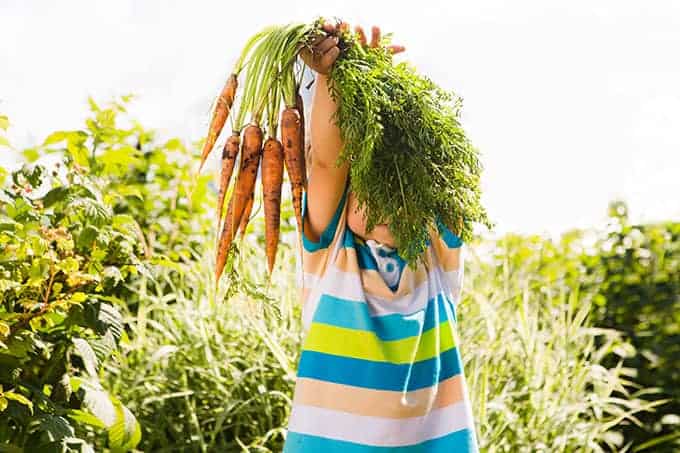
Not everyone has access to organics.
I live in a small town with two regular grocery stores and a Walmart. We have a farmer’s market in the summer and a handful of local farms, including some from Hmong families that grow the most wonderful varieties of beans, cabbages, and greens.
You know what we don’t have? A lot of organic options. And the ones that we do have are all from Earthbound Farms and they’ve sat in a warehouse or on the store shelves for weeks and look soggy and unappealing. And they’re often at least twice the price.
Asserting that people choose organic over conventional assumes we have a choice.
It assumes we have comparable options that taste equally great, are equally fresh, are similar in price.
It assumes a level of access that is NOT present in our country right now. It’s classist and based on where we have more food deserts, I might even go so far as to call it racist.
These claims are related to people believing that organic food is “healthier”. (It’s not that simple.)
It’s not. As research from John’s Hopkins points out:
Consumers’ perceptions of organic can swamp or compete with other messages about healthy eating. Therefore, consumers’ understanding of organic should be considered in developing diet‐related messages and programs.
The worst outcome of these EWG lists is that people will stop buying conventional produce out of fear and won’t replace it with anything else due to cost, access, or resources. Or we’ll worry endlessly about what our kids are being fed at school or daycare. Or we’ll feel guilt for eating a salad or an apple.
That helps exactly zero people.
Organic food is not inherently safer or healthier than conventional foods.
TIP: This video from Food Science Babe has great additional context for the issue of pesticide residue.
Organic approval is incredibly expensive.
Ask any local farmer about whether they’re certified organic and I can almost guarantee you that you’ll get an earful on how much it costs to gain that classification.
Local farmers are already facing an uphill climb when it comes to the price of land, being able to charge customers the real price of growing their food (since they don’t have the luxury of subsidies when they sell direct to consumers.
(Our friends who ran the largest organic farm in Iowa went out of business last year because they were continually being outcompeted by low cost grocery chains like Aldi and Trader Joe’s. They couldn’t make their business work or pay their workers because the demand for low cost food was too high.)
If you’re shopping from local farmers, you are supporting your own community. You are likely supporting people who care quite deeply about their land and the food they’re growing—and who care very deeply about only using approved pesticides when it’s a matter of saving a crop or not.
These lists ignore all of that reality and simply categorically cast shame.
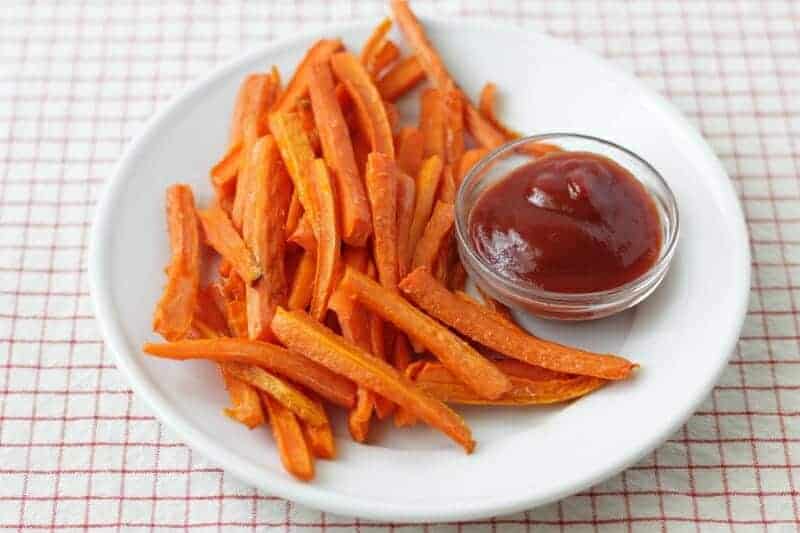
To help kids learn to love produce, it has to taste great.
Which is related to my point above. If the organic options you have access to are subpar, not fresh, and more expensive, they’re likely to not taste as good (if you can even afford to buy them).
I would much rather people aim to buy a range of produce that tastes great to help the entire family get the nutrients they need from food.
TIP: You may like my Master List of Vegetable Recipes for Kids.
All major medical organizations say that we need more produce, not less.
A recent study from the International Food Information Council found that:
- Two out of five parents say they wish they could increase the number of vegetables their kids are eating.
- One in 10 parents say their kid’s eating has worsened during the pandemic.
- Picky eating and the cost of food is a serious obstacle to how we’re feeding our kids.
And the American Academy of Pediatrics, the American Heart Association, the American Cancer Society, and the Academy of Nutrition and Dietetics all recommend that we eat more produce. Not less.
Not to mention that food insecurity has pummeled families the past year. Feeding America estimates that 1 in 6 children (or 13 million) may face food insecurity in 2021.
Making vegetables even more loaded—when they are just one food group and not the way to measure health—is very problematic.
Food shaming is never the answer.
I’m often saying how the anxiety we feel about food is much, much worse than the food itself. The guilt we feel about eating food takes a toll and it messes with our ability to eat what our body craves and needs—and it often unintentionally leads us to send a lot of mixed messages to our kids about food.
The more we can focus on eating a variety of foods that taste great and offer nutrition and the less we can jump around from week-to-week vilifying one food group or another, the better off we’ll all be. The less confused our kids will be about food. The easier it will be to feed your family with confidence.
Our food system isn’t perfect, but individuals can’t solve that.
As my friend and author Virginia Sole-Smith said recently:
…that’s not to say that our food system is perfect—it’s clearly not and there is lots of room for improvement. But that change needs to happen at a policy level. Blaming individuals or telling consumers we need to make different choices when most people can’t afford to do that (or don’t have the bandwidth/etc) is an unhelpful strategy.
TIP: I’m all for as much transparency as possible. I am not in favor of misinterpreting data though.

What to do if you’re worried.
- Choose a variety of foods and change them at least slightly from week to week. (This is the same advice for how to keep the risk for heavy metals in baby foods lower.) I like to buy two items of produce each week that I didn’t buy the week before to keep things interesting.
- Shop from local farmers when you can and talk to them about their growing practices. Many use organic practices even if they aren’t certified.
- Buy organically grown food and sustainably grown food to support the people putting in the efforts to support our environment, but not because you fear our food system as a whole.
- Practice basic food safety with your groceries and wash your produce thoroughly under running water.
- Remember that the goal of strongly worded headlines on websites is to get you to click the link. Because links earn income for the company. (Full disclosure, that’s how I make my living too here on this site.)
- Read this post from Tamika Sims, PhD of Food Insights, and watch this video from Erin of Food Science Babe for more information. And this video conversation between the two of them is great too.
- This post from Ag Daily spells out the whopping amounts of each item of produce a child would need to eat to be at pesticide levels that would be cause for concern. (I’m pretty sure your child isn’t eating 181 servings of strawberries in one sitting!)
- Do the best with the options and resources you have. If that means you choose to buy organic, go for it. If that means you buy the freshest produce you can find, go for it.
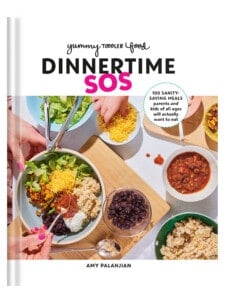
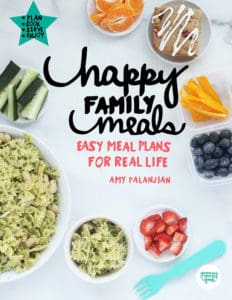













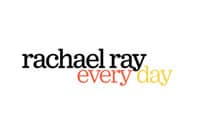



Thanks for your interesting perspective, Amy. You’re right, organic vs. non-organic is a more complex topic than many media sources make it sound. I wonder if the hoopla you’re (rightly) objecting to comes from the EWG itself or from others reporting on their findings. In reading the EWG’s own resources I didn’t feel the tone was alarmist or shaming. I have used the Dirty Dozen as an aid on a limited grocery budget – if I’m able to buy anything organic, I appreciate knowing where to put those dollars to most effectively avoid some substances that concern me. After the first twelve on the ranking, I buy non-organic and don’t worry about it. The Dirty Dozen has been useful to me, but I agree that it is best understood with the context you provide in the post.
Yes, I do think that’s right—the way other news outlets report it impact the way the message is distilled, especially since they’re all competing to grab attention with alarming headlines!
Well-argued and we’ll-supported. I need to rethink how I teach about this topic. To reflect some of your key points.
Thanks, Amy
Thanks for reading Jim. As you know, not all “organic” is created equal and this is a very nuanced and complex issue!
Amy, thank you so much for the research provided and for the thoughtful way you approached this topic. I am with you 100%.